1 18 0 191.7k
We’re all homo sapiens, we’re educated, we don’t break the law and respect moral standards. But we all live in a society and have the ability to violate other people’s private space. But what happens if you let people do whatever they want without enforcing any rules or punishment? Some people wanted to find out.
At Bright Side, we decided to learn more about experiments that have been done on this topic and were shocked by the results. We wanted to find out why this happens and if there is a way to prevent it from happening in the future.
The experiment of Marina Abramović
© marinaabramovicart/instagram © micheleelgordo/instagram
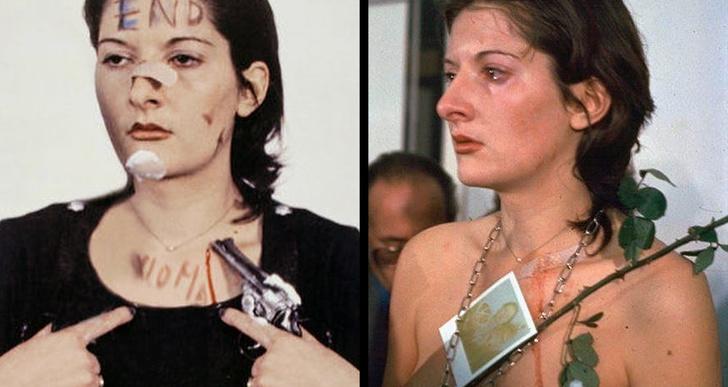
Yugoslav artist, Marina Abramović decided to find out what people would do if they had absolute power over someone else. The idea was very simple: she let other people do anything they wanted to her for 6 hours. The Rhythm 0 performance took place in Naples, 1974. The work involved Abramović standing still while the audience was invited to do to her whatever they wished, using one of 72 objects she had placed on a table. These included a rose, feather, perfume, honey, bread, grapes, wine, scissors, a scalpel, nails, a metal bar, and a gun loaded with one bullet. Her instructions were placed on the table:
© depositphotos

At first, people were careful and nice, they hugged her and gave her flowers. But when they saw that the artist didn’t react or protest, they started going further. Her hair, clothes, and even skin were cut. People were becoming more and more aggressive. When a loaded gun was thrust to Marina’s head and her own finger was being worked around the trigger, a fight broke out between the audience members. “I wanted to show how fast people would return to their natural state if you let them. What I learned was that... if you leave it up to the audience, they can kill you”, she explained. Marina Abramović’s experiment showed that even the most ordinary, healthy people would do terrible and violent things if they got the chance.
Our childhood determines a lot.
© depositphotos © Patrick Melrose/Showtime
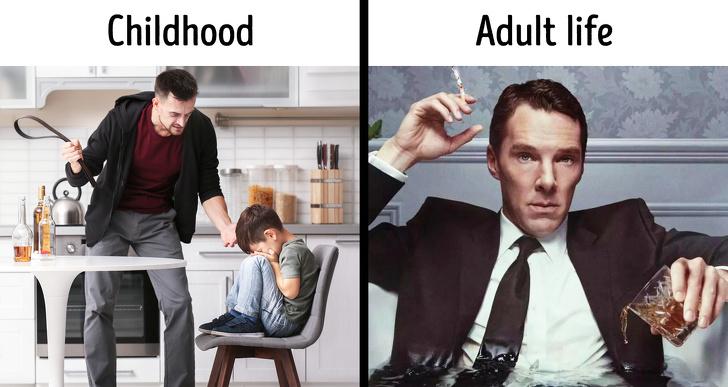
In some families, children don’t have any rights, while in others, they can do anything they want. As a result, children grow up convinced that everyone else should do as they please, or vice versa, they try to compensate for the terrible childhood as oppressive parents, so they make others suffer. Here, it’s very important to find the middle ground: on the one hand, it’s necessary to give a child freedom and at the same time, teach them to respect others. Scottish teacher and writer, Alexander O’Neal had to explain the differences between freedom and absolute freedom for many parents. The famous teacher explains that self-regulation is very important. Only a stupid person would give a box of matches to a child. For example, if your 5-year-old daughter wants to sew a dress from your favorite jackets, you won’t let her do that. But you can come up with an alternative option and use some of the clothes you don’t wear anymore. It’s very important to give children freedom but still show them that there are limits. Explain why there are limits: it can be a threat to someone’s health or freedom.
It’s not the severity of the punishment that is scary but rather, the inevitability.
© Sherlock/BBC One © Sherlock/BBC One
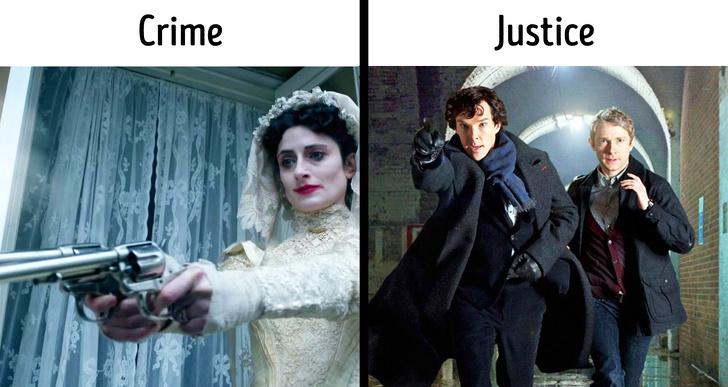
Psychologists and forensics know that the severity of a punishment is not as scary as the inevitability of it. The problem is that not all crimes are solved. According to information from American researchers, only 75% of murders end with an arrest. According to the Bureau of Justice statistics, 68% of 405,000 prisoners who were freed in 30 states in 2005 were arrested within 3 years after their first sentence. Such statistics repeat every year. Prisoners think that they won’t get arrested a second time. And if the number of solved crimes were over 95%, fewer people would risk breaking the law again. This topic was explained by Oscar Wilde in The Picture of Dorian Gray. The main character could do any bad thing knowing that all his sins would only be pictured in his portrait and he would still be handsome. Nobody would blame such an attractive person for such crimes. Even the title of Dostoyevsky’s novel, Crime and Punishment implies that every crime must be punished. And forgiving criminals only leads to new crimes. The impunity of some political leaders like Hitler and Stalin, for example, led to terrible events in their countries and many other places in the world.
Absolute power in movies
© The Experiment/Inferno Distribution © The Experiment/Inferno Distribution

Many directors discuss the topic of impunity in their movies. In Dogville by Lars von Trier, the character of Nicole Kidman hides from police in a small town. In the beginning, locals have a nice attitude toward her, but soon they realize that the girl has no protection in this town and it’s up to them if the police find her or not. So they start treating her as a slave, they make her work hard, humiliate and rape her. In An Experiment, 26 volunteers play the roles of guards and inmates. The guards play their roles so well that they turn into sadists. And in Experimenter, different real experiments are described which prove that people can easily hurt other people if they have to. When directors describe these stories, they don’t always find answers as to why. They want the viewers to search for the answers themselves.
It’s easier to show aggression that peacefulness.
© Harry Potter and the Chamber of Secrets/Warner Bros. © Harry Potter and the Cursed Child/Manuel Harlan
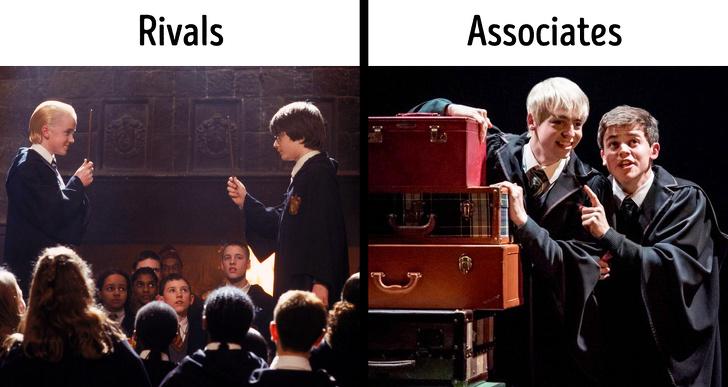
Why do people start hating others? Psychologist Muzafer Sherif tried to find the answer to this question. He modeled a conflict between groups in a children’s summer camp. The psychologist split his students into 2 groups: “The Rattlers” and “The Eagles”. Only one of the teams could win in various competitions and contests. Very soon, a feud between the groups started. They even fought each other. They hated each other more and more. After that, the referee started creating situations that could only be resolved together. For example, their bus “accidentally” broke down and all of them had to push it together. As a result, the feud stopped but it took much more time. Maybe one of the reasons why Harry Potter and Draco Malfoy were rivals was because their houses had been rivals ever since the school had opened. And it was a matter of honor for every student to prove that their house was the best. And when Harry and Draco’s children were in the same house, they became friends. Almost every day we see people divide themselves into “ours” and “others”. Ask yourself: How is this person different? Is it because someone else says so? Is this person too different?
Why this happens and how to prevent it
© depositphotos © depositphotos
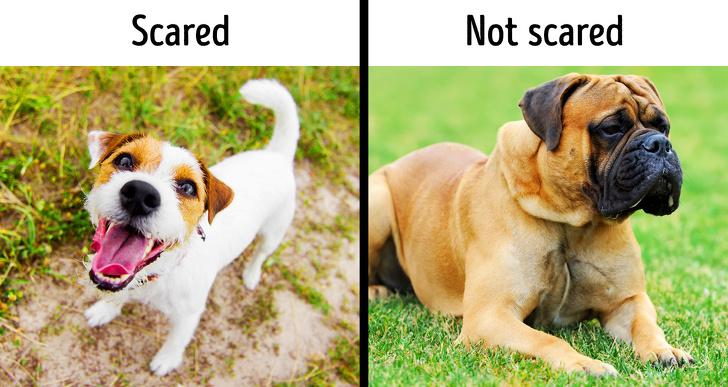
People often show aggression to others because they’re scared of the world and themselves. A strong and confident person will never be an obstacle for another person’s freedom. Fear makes people defensive and aggressive. People often play the roles that society tells them to and they hide a lot of things. It’s good when you have people you can share your fears with, but most of the time, people become closed off and they express their emotions through fear and anger. Especially when they know that they won’t be punished. Yes, the words, “One should treat others as they would like to be treated” may sound trivial but on the other hand, it may be very useful to imagine yourself in someone else’s shoes. This is a good way to imagine if you would like to be treated a certain way. People may do different things but they should be responsible for their own actions. Remember, “Your freedom ends where mine begins”.
Do you agree with the ideas in this article? Share your opinions with us in the comment section below!
Preview photo credit newyorkartgallery1/instagram, micheleelgordo/instagram